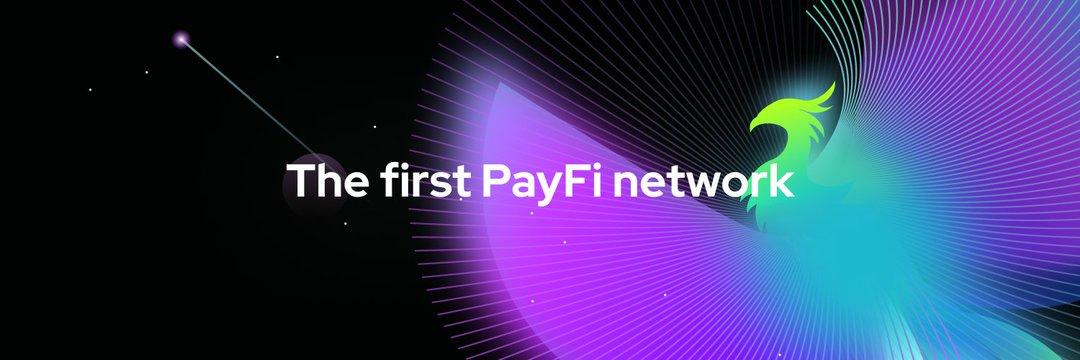On the development path of decentralized finance (DeFi), the logic of the vast majority of protocols remains stuck in the old model of 'asset collateralization - lending - liquidation.' Whether collateralizing ETH, stablecoins, or NFTs, the core idea is to lock a portion of existing assets in exchange for another portion of liquidity. However, this model inherently excludes a large number of potential users: for those who do not have significant on-chain asset accumulation, they cannot prove 'future repayment capacity' and thus find it difficult to obtain financial services. The emergence of Huma Finance aims to break this deadlock.
At the core of Huma Finance is the PayFi network, an infrastructure layer that integrates payment and financing. It does not focus on 'what you currently have' but rather on 'how much you can earn in the future.' This means that salary income, invoice receipts, and even cross-border remittances can all become on-chain credit credentials, instantly converted into available liquidity. For example, if a freelancer expects to receive $5,000 per month, the Huma protocol can release $3,500–$4,500 of instant liquidity by analyzing historical receipt records and cash flow patterns without waiting for the actual payment to arrive. This effectively implements the core financial concept of 'time value' directly onto the blockchain system.
Compared to traditional DeFi lending, Huma Finance does not rely on excessive collateralization but rather on cash flow modeling. Its underlying time value of money (TVM) model allows both borrowers and fund providers to achieve a balance of risk and return: fund providers lock their capital through smart contracts, and the system determines how much liquidity can be released based on the stability of future cash flows, ultimately constructing a dynamic and personalized financing system. The key innovation here is that risk is no longer dominated by 'asset price fluctuations' but driven by 'cash flow credibility,' marking a paradigm shift for blockchain finance.
Furthermore, Huma's strategy is not limited to simple on-chain lending; it is more like building a universal Income-as-an-Asset protocol layer. In real-world finance, accounts receivable financing, salary advances, supply chain finance, and even risk pricing in the insurance industry all require cash flow modeling. Huma Finance's PayFi network sits at the intersection of these needs, enabling the migration of cash flows from various economic activities around the world onto the chain for standardized processing. The significance of this infrastructure lies in its ability to lower the financing threshold for individuals while providing a unified underlying protocol for financial innovation at the enterprise and institutional level.
Moreover, it is worth noting that Huma's advantages are not limited to the financing side. Since all its cash flow data and contract logic are verifiable on-chain, it also provides an interface for the integration of DeFi and TradFi. Imagine a multinational corporation whose invoice financing can be completed directly through the Huma protocol, and the relevant cash flow credentials can be viewed and verified by any institution willing to provide funding worldwide. This means that Huma is not just a DeFi application, but potentially a new infrastructure that could serve as a 'settlement and credit bridge' in the global financial system.
Currently, traditional banks and fintech companies still face many bottlenecks in 'future income financing': lengthy approval processes, numerous geographical restrictions, and a lack of transparency in credit assessments. Huma Finance's decentralized architecture effectively bypasses these obstacles. It executes financing logic instantly through smart contracts, while transparent cash flow data reduces information asymmetry, and cross-chain and cross-border compatibility further breaks down barriers between regions and systems. This makes Huma one of the few DeFi projects with real potential for 'real-world asset (RWA)' implementation.
In the long run, the development of Huma Finance is not just about 'enabling individuals to get paid faster,' but more about promoting the upgrade of the entire financial logic. If Bitcoin brought 'currency' onto the blockchain and Ethereum brought 'contracts' onto the blockchain, then Huma is expected to bring 'cash flow,' a core variable in finance, onto the chain and standardize it as a verifiable and financeable asset class. Once this model scales, the future financial market may adopt 'cash flow NFTs' or 'income certificate tokenization' as new trading units, fundamentally reshaping the way capital flows.
In other words, Huma Finance is not creating a new DeFi application but is providing a brand new operating system for global finance. Its ambition is to enable anyone with predictable income, whether individuals or businesses, to instantly access liquidity support on a global scale, free from the geographical and centralized logic of traditional finance.
As DeFi gradually moves towards specialization and real-world application, Huma Finance's logic of 'future income as an asset' offers a new dimension that is worth long-term tracking for the entire industry.


